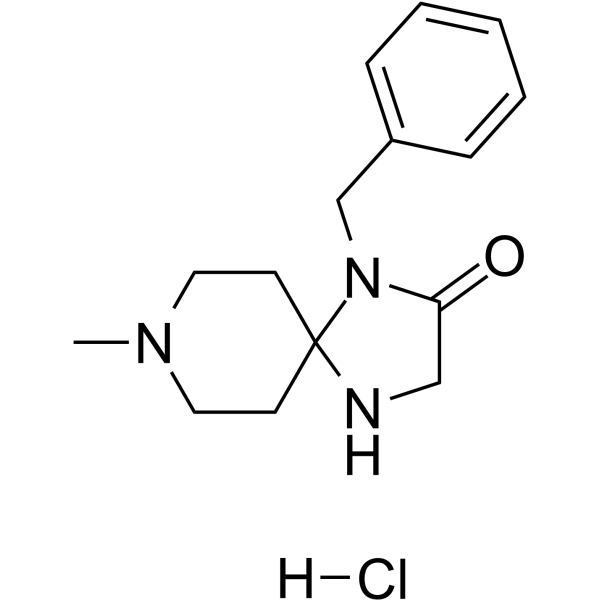2480226-07-9
| Name | Simufilam hydrochloride |
|---|
| Description | Simufilam (PTI-125) (hydrochloride) is a low toxicity, orally active filamin A (FLNA) activator. Simufilam (hydrochloride) preferentially binds altered FLNA and restores its native conformation, restores receptor and synaptic activities, reduces its a7nAChR/TLR4 associations and downstream pathologies. Simufilam (hydrochloride) can be used for the research of Alzheimer's disease[1]. |
|---|---|
| Related Catalog | |
| Target |
FLNA[1] |
| In Vitro | Simufilam (1 pM~1 nM) (hydrochloride) dose-dependently improves NMDA/glycine-induced Arc expression[1]. Simufilam (1 nM, 1 hour) (hydrochloride) largely restores filamin A to its native conformation and is effective in normalizing receptor activities in AD frontal cortices. Simufilam (hydrochloride) dose-dependently reduces Ab42-induced FLNA coupling to a7nAChR and TLR4 in both Ab42-treated control and AD hippocampus. Simufilam (hydrochloride) reduces Ab42's binding affinity for a7nAChR, thereby prevents Ab42's signaling and further accumulation on a7nAChRs[1]. |
| In Vivo | Simufilam (P.o.; 2 months) (hydrochloride) restores FLNA to its native conformation. Simufilam (22 mg/kg; p.o.) (hydrochloride) robustly reduces FLNAea7nAChR/TLR4 associations. Simufilam (hydrochloride) significantly improves spatial memory. Simufilam (hydrochloride) significantly improves working memory[1]. |
| References |
| Molecular Formula | C15H22ClN3O |
|---|---|
| Molecular Weight | 295.81 |
